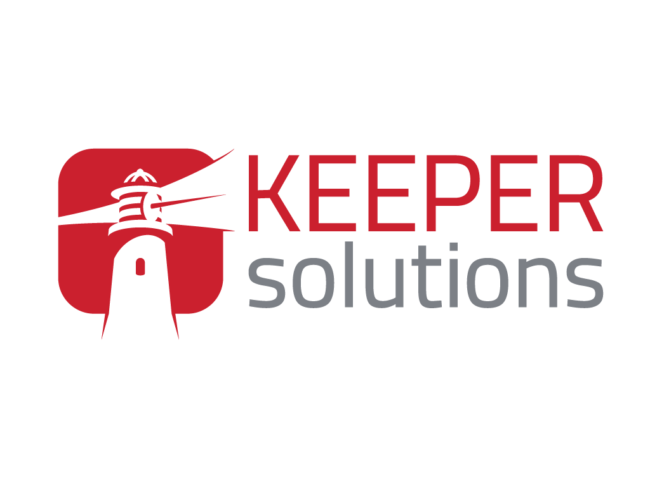Nearshore Software Development and Other Outsourcing Models
What is nearshore software development? Nearshore software development is a type of software development outsourcing that involves companies delegating software projects to dedicated software development teams located in nearby countries. Here, when we say ‘nearby countries’, we generally mean a country within 1-4 time zones. This proximity is mainly what differentiates nearshoring from other models such as off-shoring and on-shoring, which we’ll explain in more detail further below.
The nearshore software development model has become increasingly popular in recent years. In modern business, with remote working and hybrid working practises, it is not essential for organisations to have all their employees under the same roof. Fully in-house teams are less common and viewed as less vital. For many, the pandemic further shown us all just how easy it is to work effectively together even when collaborating from different corners of the globe. But in reality, companies have been outsourcing their technology solutions for years.
As a company experiences success and starts to expand, it can be a real challenge to find the right talent and build a solid team to support their growing needs. At some point, it simply makes sense for businesses to outsource some portion of the information technology and software development functions. While organisations are comfortable with the concept of outsourcing software development, it can be challenging to differentiate between the various outsourcing models.
In this blog post, we are going to take a deep dive into nearshore software development. We’ll look at what it is and what separates it from other engagement models.

Nearshore Software Development and How it Works
As we mentioned above, the difference between nearshoring and alternatives to nearshore software development outsourcing, mainly has to do with proximity and time zones. Nearshoring is a model of software development outsourcing that enables companies to delegate software development projects to third-party teams or outsourced development partners in nearby countries. Here, when we say ‘nearby countries’, we generally mean a country within 1-4 time zones.
Usually companies nearshore to locations with large pools of untapped talent exist. There are often limited cultural differences and high English proficiency, which makes for a much smoother transition. By choosing nearshore software development, companies can enjoy the same high calibre of work with similar operational efficiencies. If a company has a blend of in-house and outsourced developers, nearshoring makes it much easier to collaborate in real-time.
Nearshoring allows companies to expand their operations rapidly, especially when sourcing local talent is a serious barrier to business progression. Popular nearshore locations for North American companies include Mexico, Brazil, Colombia, Costa Rica, and Argentina.
Supporting a Fast Scaling Start-up in Atlanta Georgia with Nearshore Software Development
To give a quick example – a technology company in Atlanta, Georgia might outsource its software development projects to a third-party software development company in Costa Rica. This exact arrangement is how Keeper Solutions works with its many partners in Atlanta, Georgia. Read more about how we work with Artis AI here.
That example would be considered to be a nearshore software development model as Costa Rica is within a 1-hour time zone of Atlanta. Costa Rica is seen as a perfect location for nearshoring to the US as its natives are highly proficient in English, and there is at least a 4 hour overlap with the various time zones that exist within America. The country has also invested heavily in its education system so has a top pool of talent. Learn more here.
Once we understand the concept of nearshore software development, the next question is what differentiates nearshoring from other engagement models.

Nearshore Software Development vs Outsourcing
While there is often a lot of confusion between the two terms, this is actually the easiest one to explain. Simply put, software development outsourcing is a broad term that describes the transferring of software development needs to a third-party freelancer or team. Nearshoring, on-shoring and off-shoring are all types of outsourcing. So, it is not a case of choosing between nearshoring and outsourcing because nearshoring is a form of software development outsourcing.
In general, companies outsource their software development needs as a means to:
-
-
-
-
-
-
-
-
-
-
- Cut costs;
- Fill a knowledge or expertise gap;
- Gain access to a larger pool of talent;
- To build a team quicker than if they were to only hire locally;
- To allow the in-house to focus on the core business;
- To reduce time-to-market.
-
-
-
-
-
-
-
-
-
Nearshoring vs On-shoring
Software on-shoring is a type of domestic software development outsourcing. It involves outsourcing software development projects to another location within the national borders. There are many benefits to software development on-shoring. As the third-party team is located within the same country, it makes it much easier to communicate with them or even meet them in person. Also, as you are working within the one country, it removes any confusion about the other country’s culture, laws or tax policies.
However, on-shoring is much pricier than other outsourcing models and it doesn’t necessarily solve the talent shortage challenge. If there is a lack of talent in the area, there might also be a lack of talent within the country itself. Skilled developers, designers, and engineers often choose to work for international product companies. So it’s often unlikely to find the country’s top talent working at a software on-shoring company.
Nearshoring vs Off-shoring
Offshore software development is the process of utilising the services of a team located in a remote location to develop software for use in your home country. The difference between nearshoring and off-shoring comes down to proximity. While near-shoring teams are within 1-4 hour time zones, offshore refers to outsourcing to far-away countries with considerable time zone differences. For example, India is one of the most popular offshoring destinations for software development and IT.
Off-shoring can be considerably cheaper than both nearshoring and on-shoring. Off-shoring can also open up a huge pool of talent and there are many benefits to offshoring in itself. However, many companies place a huge amount of emphasis in collaboration and communication. For those companies, nearshoring is viewed as the most desirable option.
Nearshore Software Development vs In-house Software Development
In-house software development isn’t an outsourcing software development model but it is worth mentioning in this context. If you are developing software, one of your options is to keep it all in-house, using the company’s own employees and resources. Many CTOs will tell you that in-house development teams are the preferred solution for scaling software operations. By building an in-house software development team, you have full control over the vision and product development. There are also much less barriers to communication.
That said, for many companies, building a highly talented in-house simply isn’t possible. Software development projects require multiple individuals with a myriad of different skills and expertise. Hiring specialists isn’t easy or cheap and depending on the location, can be near impossible.
Even if you do hire a full in-house team, you then have to make sure they are supplied with the right resources to get their job done. Again, this can prove incredibly costly, significantly increasing your project budget. And finally, building an in-house team mightn’t be the answer long-term.
Sometimes companies just need to work with a team of developers for a short or medium term project. Nearshoring and other outsourced software development options allow companies to scale down resources when they are no longer needed. It is much more complicated to scale down resources, when you’ve built an in-house team.

Considering Nearshore Software Development With Keeper Solutions
In this article, we have introduced you to the concept of nearshore software development and how it compares to other engagement models. If you are considering a nearshore software development model, there are a host of different aspects to consider. At Keeper Solutions we have over a decade’s experience, providing scalable, expert outsourcing solutions to companies in Europe, Asia and North American.
We would be delighted to answer any questions you may have and help you tease out the best option for you.



